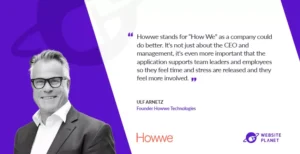The Psychology of Strategy Execution: Commitment, Behavior, and Momentum
The world of strategy execution has been riddled with challenges. From ineffective communication to ineffective strategies, many barriers keep companies from reaching their goals. The crux of these problems often boils down to human behavior, engagement, and commitment. So, how do successful companies foster commitment and behavioral change across all levels? Moreover, what is the psychology behind building commitment and momentum?
1. The Behavior and Commitment Conundrum
Any strategy, however visionary, is rendered useless without execution. And at the heart of execution lies a series of human behaviors. This realisation brings us to the core question: How can companies ensure employees are committed enough to change their behavior to align with a new strategy?
There are a few time-tested methods:
● Inclusion and Participation: More often than not, top-down strategies face resistance. Employees are more likely to commit to a strategy that they’ve had a hand in crafting. Actively involving employees in strategy formation fosters a sense of ownership and belonging. This way, the strategy isn’t something that’s done to them, but something they’re a part of and feel that their role is strongly connected to ’something bigger’.
● Clear Communication: Vague communication leads to uncertainty and distrust. Every stakeholder, from the top management to the frontline worker, needs to understand the strategy, its importance, and its implications. This messaging of ’the Why’ is so important. Clearly define the goal, the activities that support the goal, who is responsible and agree the ’definition of done’. This clarity reduces resistance and builds commitment.
● Aligning Incentives: A strategy might require an employee to change their routine, take on additional work, or learn new skills. Unless there’s an incentive (monetary or non-monetary), pushing for these changes will be an uphill battle. This brings us back to the previous point of clearly communicating the ‘why’ for the employees.
2. The Psychology of Commitment and Building Momentum
Most humans, by nature, resist change. The familiar is comfortable. So when companies roll out a new strategy that demands change, it’s only natural for employees to resist. The status quo is easier and ’change requires change’. This is where understanding the psychology behind commitment becomes crucial.
● Sense of Purpose: Humans are driven by purpose. If an individual understands the ‘why’ behind a change, they are more likely to commit to it.
● Progressive Achievements: Celebrating small wins builds momentum. When employees see progress, even if it’s incremental, it motivates them to push forward. It creates a snowball effect where success breeds further success. For instance this can simply be done via daily stand-ups as one example or in our Howwe Way of Working the weekly Acceleration meetings, where progress is brought into the spotlight within the Howwe platform for review, brief discussion and agreement, with the commitment culture fostered within a team environment.
● Leadership by Example: Leaders need to be the first to adopt and showcase the behaviours expected from their teams. Observing leaders acting in-line with the new strategy influences employees to follow suit. This trickle-down effect is a powerful tool in enduring and successful strategy execution.
3. The Overlooked Element: Sensemaking
A recent revelation in the world of strategy execution is the importance of sensemaking. It’s the process by which individuals give meaning to a strategy. For successful strategy execution, it’s not enough to just communicate the strategy. Leaders at all levels must ensure that employees can relate the strategy to their individual roles and daily tasks. According to the Howwe Way of Working, the overarching goals are broken down across each and every function, which fosters their involvement and motivation, which is part of the top-down/ bottom up methodology of alignment.
● Contextualizing Strategy: Each individual should understand how the strategy affects their role. Leaders should offer examples, scenarios, or case studies to help employees contextualize the strategy.
● Empathy and Understanding: Leaders should actively seek to understand the concerns and reservations of their team. Addressing these concerns helps in refining the strategy and ensuring smoother execution while bringing all levels of the organisation closer together, and more aligned on the challenges and opportunities facing the organisation.
In Conclusion
Strategy execution isn’t just about defining clear goals. At its core, it’s about understanding human psychology, fostering commitment, and facilitating the required behavior change. By focusing on these elements, companies can bridge the chasm between strategy formulation and its execution, ensuring they don’t become another statistic in the long list of strategy execution failures. Using modern digital strategy acceleration software such as Howwe will help secure a positive behavior change with a shortened calendar time from agreeing the strategy to seeing real measurable improvements.





